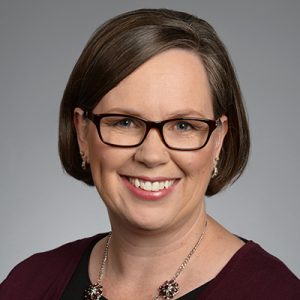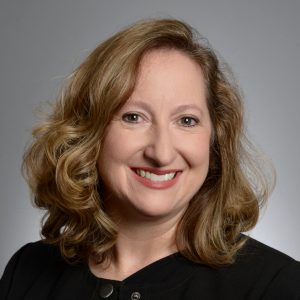$1.25 million NIH grant links science, literacy and math education in middle schools
Online resources for teachers help students gain confidence in learning, spark interest among underrepresented students in STEM topics.
As an eighth-grade science teacher in Missouri, Jeannie Sneller knows firsthand it can be challenging for some middle school students to have the stamina and reading comprehension skills needed to make sense of the complex texts, tables, charts and graphs required to understand eighth-grade science, engineering and mathematics topics.

In an effort to boost the disciplinary literacy skills of middle school students in classrooms like Sneller’s, faculty at the University of Missouri have garnered a $1.25 million Science Education Partnership Award (SEPA) grant from the National Institutes of Health (NIH). The grant will create teaching resources combined with professional development for teachers that complement existing curricula in creative, innovative ways.
The resources center around current science research topics, such as the health effects of electronic cigarettes, and are combined to form a multimodal text set. A multimodal text set involves a series of lessons that integrate different resources, such as short stories, videos, art, podcasts, comic books, music, cartoons and picture books, designed to “scaffold” learning to support students as they develop new concepts and skills to read complex text. In addition, a significant goal is to improve students’ use of scientific argumentation, or the ability to make a claim, back up the claim with scientific evidence and then use logic or reasoning to justify why the evidence supports the claim.
“Our research has found this teaching approach helps all students, and particularly, those with disabilities,” said Delinda van Garderen, professor of special education in the MU College of Education and Human Development. “As teachers, we need to help all students, including those who have diverse learning needs and who come from diverse socioeconomic backgrounds, as some students with disabilities may not excel in science education. That help can impact their trajectory as they go on to college and in the workforce. Hopefully, we can inspire kids at the middle school level so that traditionally underrepresented groups feel confident about potential careers in science, technology, engineering and math.”
The new grant builds upon the success of the researchers’ existing SEPA grant from NIH, which provides resources to teachers like Sneller in Missouri middle schools.
Under the existing grant, teachers reported successful improvements in students’ ability to understand texts and use scientific argumentation, but some of their students still struggled to analyze graphs, charts and tables often found in math textbooks. The new grant will expand what has been learned to include middle school teachers in other states and will also include a math component.

“Once I started implementing the interventions MU provided me with, I saw some of my students that were struggling learners now suddenly writing in complete sentences. They were able to read these longer texts, comprehend it, and then write about it using claims, evidence and reasoning,” Sneller said. “It also helped me as a teacher become more aware and thoughtful about what resources I was using in the classroom. Not every student comes into eighth grade being able to fully comprehend textbooks designed for an eighth-grade level, so by using a variety of tools to spark their interest, learning becomes more exciting for the students, and they are much more engaged in the content.”
Previous research has indicated middle school is a time when many students start considering their future career paths. The grant will allow math and science teachers to share resources that complement classroom curriculum with the goal of increasing students’ interests in these subjects.
“Literacy is the key to unlock the doors of possibility,” said Amy Lannin, director of MU’s Campus Writing Program and an associate professor in the MU College of Education and Human Development. “Whether it is math, science or language arts, an increase in literacy is often linked with an increase in confidence, and we as teachers and researchers can help encourage our students to pursue any field they might be interested in.”
While the project is aimed at middle schools, the lessons learned will positively impact the global workforce, which continues to become more diverse, yet still has underrepresented numbers of women, minorities and those with disabilities in science, technology, engineering and math (STEM) fields.
“We are committed to creating a more diverse workforce, where scientific argumentation plays a key role amongst all citizens every day,” said William Folk, a professor in the MU College of Agriculture, Food and Natural Resources and MU School of Medicine. “There are racial and socio-economic disparities in our population, so by having a more diverse workforce of physicians and researchers, we can better respond to the needs of all people in our society.”
Funding for the grant was provided by the National Institute of General Medical Sciences (NIGMS) of the National Institutes of Health (NIH) Science Education Partnership Award (SEPA) program under award number R25GM146287. The content is solely the responsibility of the authors and does not necessarily represent the official views of the National Institutes of Health.